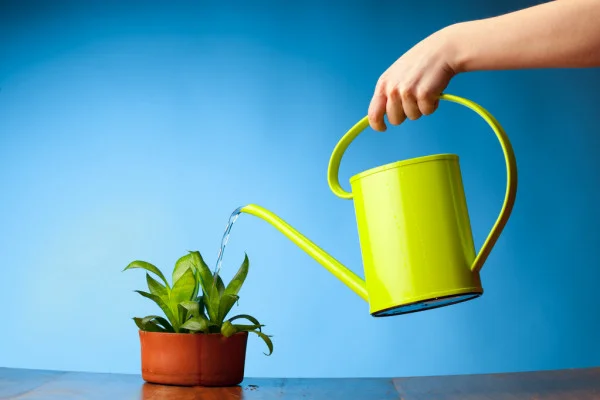How to Raise Humidity for Houseplants (Increasing Humidity for Indoor Plants)
Some links in this post may be affiliate links

Sometimes especially when the indoor temperatures are high, the indoor air can be quite dry.
Very few plants can tolerate dry air; most indoor plants require the surrounding air to be moist for optimum growth. Houseplants need less warm air and more moist air.
Papery leaved houseplants need more air humidity than houseplants with thick, leathery leaves.
The humidity problem can be solved by placing houseplants in moist spots in the home like the kitchen, bathroom or a terrarium.
However, you can still have your houseplants in any space in your home by raising the air humidity.
Various techniques can be employed to create a micro-climate of moist air around the plants while the rest of the room remains dry. Keep reading for some common techniques that you can employ to increase humidity for your plants.
Techniques of Increasing Air Humidity for Houseplants
1. Misting
Using a mister with a fine spray, deposit a coating of small droplets of water on the leaves of your plants. Ensure you cover the entire plant including the underside of leaves.
Remember to use tepid water and mist under cool conditions. Mist in the morning so that the foliage can dry before night fall.
Do not mist when the foliage is exposed to bright sunlight as it can lead to sunburn on the foliage.
Apart from raising the air humidity, misting also has a cooling effect on hot sunny days. It also discouarges pests like spider mites and aphids. Misting also reduces dust settling on the plant foliage.
2. Double Potting (Cache Pot)
Use a waterproof outer container to hold your potted plant and fill the space between the pot and the container with moist moss.
Keep this layer of moss thoroughly and continually moist so that there is always a layer of moisture to evaporate and raise the air humidity.
This set up does not only increase the humidity, it provides a moisture reservoir for the plant below the pot and also it insulates the soil in the pot from sudden temperature changes.
3. Grouping Houseplants
Growing plants in a group or in an indoor garden has the benefit of increased moisture arising from damp soil and the foliage of surrounding plants.
The air trapped between the plants has a higher air humidity than the air around an isolated plant. This technique has some disadvantages in that too much humidity may lead to the onset of fungal diseases.
4. Pebble (Humidity) Tray
Use a water-proof shallow container (tray) about 2 inches high, place 1 inch of gravel (pebbles) in the bottom of the tray and keep the bottom of this layer wet at all times.
Place the plant pot on this layer of gravel (pebbles) and as the water evaporates into the air, the air humidity around your houseplants is increased.
This pebble tray allows you to use pots with drainage holes without worrying about excess water run off; the overflow will collect in the tray and replenish evaporated water.
Do not allow the water level to cover the top of the gravel (pebbles) to prevent the soil in the pots from drawing up excess water which may result in soggy soil.
To clean your pebble tray; remove the pebbles, wash the tray as well as the pebbles with mild soap, rinse, replace and refill with water.
5. Place Plants in Humid Areas in the Home
Humid areas in the home include the bathroom, kitchen and laundry area which are constantly humid due to the water being used in these areas.
Place the moisture-loving plants in these areas so that they can benefit from the moisture present in these spaces. However, consider the lighting in these areas so as to match the plants with the available light.
6. Humidifiers
Humidifiers are an excellent way of raising humidity for your indoor plants. Numerous humidifiers are available to choose from.
The choice of humidifier is entirely upon you to determine. Some of the factors to consider are capacity, size of the room, number of plants, price, durability among others.
We have selected the following modern humidifiers for plants that you can choose from.
1. 6L LEVOIT Humidifiers, Cool Mist, Top Fill for a Large Room
2. 6L LEVOIT Humidifiers, Cool & Warm Mist, Top Fill, with Built-in Humidity Sensor for a Large Room
3. 3L LEVOIT Humidifiers, Cool Mist, Top Fill for a Large Room
4. 2.2L AquaOasis, Cool Mist & Quiet Humidifier for a Large Room
5. 4.5L VIVOSUN Air Humidifier, Cool & Warm Mist for a Large Room
Signs of a houseplant that is getting too little humidity
* The leaf tips are brown and shrivelled
* The leaf edges turn yellow and wilting may occur
* The flower buds shrivel and fall (drop)
* If plant is very sensitive to dry air, the leaves fall off
If you observe the above signs in your plant, you will need to employ some technique to raise humidity for the houseplant.
Signs of a houseplant that is getting too much humidity
* The flowers are covered with grey mold which is a sign of Powdery Mildew
* There are patches of grey mold on the leaves
* There are patches of rot on leaves and stems
If you observe the signs above in your plant, it shows that the air is too still thus becoming too humid. To save the situation, ensure that there is good air circulation (free air movement) in the room.
You liked it? Share on social media.
Related Content
Amazon Associates Disclosure
Homeplantsguide.com is a participant in the Amazon Services LLC Associates Program, an affiliate advertising program designed to provide a means for sites to earn advertising fees by advertising and linking to amazon.com.


